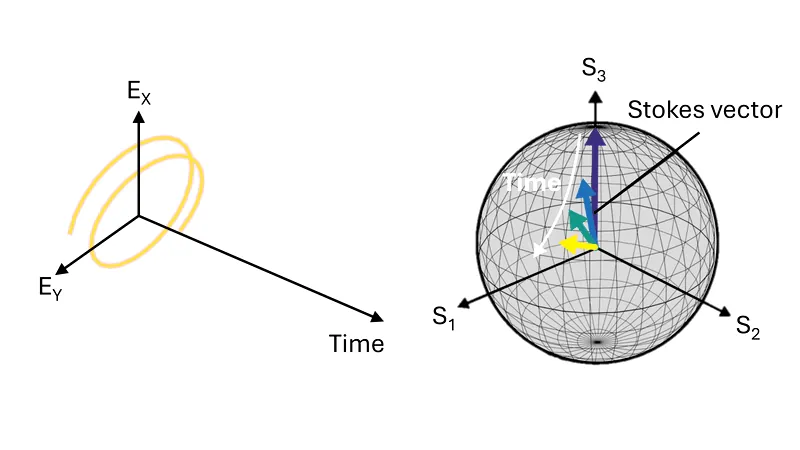
Revolutionary Imaging Technique Unveils the Secrets of Polarized Light
2025-07-02
Author: Yu
EPFL Unleashes Cutting-Edge Light Polarization Tech
In an exciting breakthrough, scientists at the École Polytechnique Fédérale de Lausanne (EPFL) have invented a groundbreaking imaging technique that allows researchers to observe how materials emit polarized light with unmatched sensitivity and detail.
Understanding the Magic of Polarization
Light is more than just brightness and color; it has the ability to twist and turn through a phenomenon known as polarization. Just like those special 3D glasses you wear at the movies, polarization creates depth and complexity by altering how light waves interact with our eyes.
Polarization holds immense potential for future technologies, impacting everything from quantum computing to secure communications and dazzling holographic displays. Many materials emit this unique light in ways that convey hidden messages through its polarization, similar to spiraling waves of light.
Breaking Barriers in Research
For advancements in applications to occur, observing the evolution of polarization over time is crucial. Unfortunately, researchers have been hindered by traditional methods that require trade-offs in speed, sensitivity, and color range.
Existing techniques often struggle to capture faint signals or respond quickly enough to track fleeting polarization effects in chiral materials—those that hold a unique handedness. This has impeded scientists from fully understanding how these materials interact with light.
High-Sensitivity Spectroscopy: A Game Changer
Led by Professor Sascha Feldmann, the EPFL team has now developed a state-of-the-art high-sensitivity, broadband, time-resolved spectroscopy technique capable of capturing the complete range of polarization states, known as the "Stokes vector." This innovative technique operates across a wide spectral range (400–900 nanometers) and can record timing from nanoseconds to several milliseconds.
What's truly remarkable is its noise floor, which is incredibly low—just one-ten-thousandth the intensity of the polarized light emitted by the materials being studied. This allows the capturing of both linear and circular polarization signals simultaneously, enabling precise identification and correction of common measurement artifacts.
Unveiling New Dynamics in Light Emission
Utilizing off-the-shelf components, the team designed the new instrument to be easily adopted by the scientific community and has shared detailed optical schematics. By using an electronically gated camera and specialized polarization optics, they successfully recorded the full Stokes vector in real time, revealing dynamics in molecules with varying strength of polarized luminescence.
This innovative setup not only confirmed established results in well-known molecules but also illuminated new dynamics in organic emitters and complex systems where light emission occurs across different timescales.
A Leap Forward in Scientific Understanding
The technique provides a unique perspective on polarization changes that had previously gone untracked. It also identifies subtle artifacts that could confuse traditional measurements, allowing researchers to steer clear of common research pitfalls.
With its impressive combination of high sensitivity, broad spectral coverage, and rapid time resolution, this technique offers an unprecedented glimpse into excited-state polarization dynamics, fostering the development of chiral emitters, quantum materials, and advanced optoelectronic devices.
Democratizing the Field for Future Discoveries
In a bid to advance scientific research globally, the team has made their blueprints and automation algorithms available to the public. This open-source approach aims to democratize access to this innovative technique and accelerate discoveries in the realm of polarized light.



 Brasil (PT)
Brasil (PT)
 Canada (EN)
Canada (EN)
 Chile (ES)
Chile (ES)
 Česko (CS)
Česko (CS)
 대한민국 (KO)
대한민국 (KO)
 España (ES)
España (ES)
 France (FR)
France (FR)
 Hong Kong (EN)
Hong Kong (EN)
 Italia (IT)
Italia (IT)
 日本 (JA)
日本 (JA)
 Magyarország (HU)
Magyarország (HU)
 Norge (NO)
Norge (NO)
 Polska (PL)
Polska (PL)
 Schweiz (DE)
Schweiz (DE)
 Singapore (EN)
Singapore (EN)
 Sverige (SV)
Sverige (SV)
 Suomi (FI)
Suomi (FI)
 Türkiye (TR)
Türkiye (TR)
 الإمارات العربية المتحدة (AR)
الإمارات العربية المتحدة (AR)